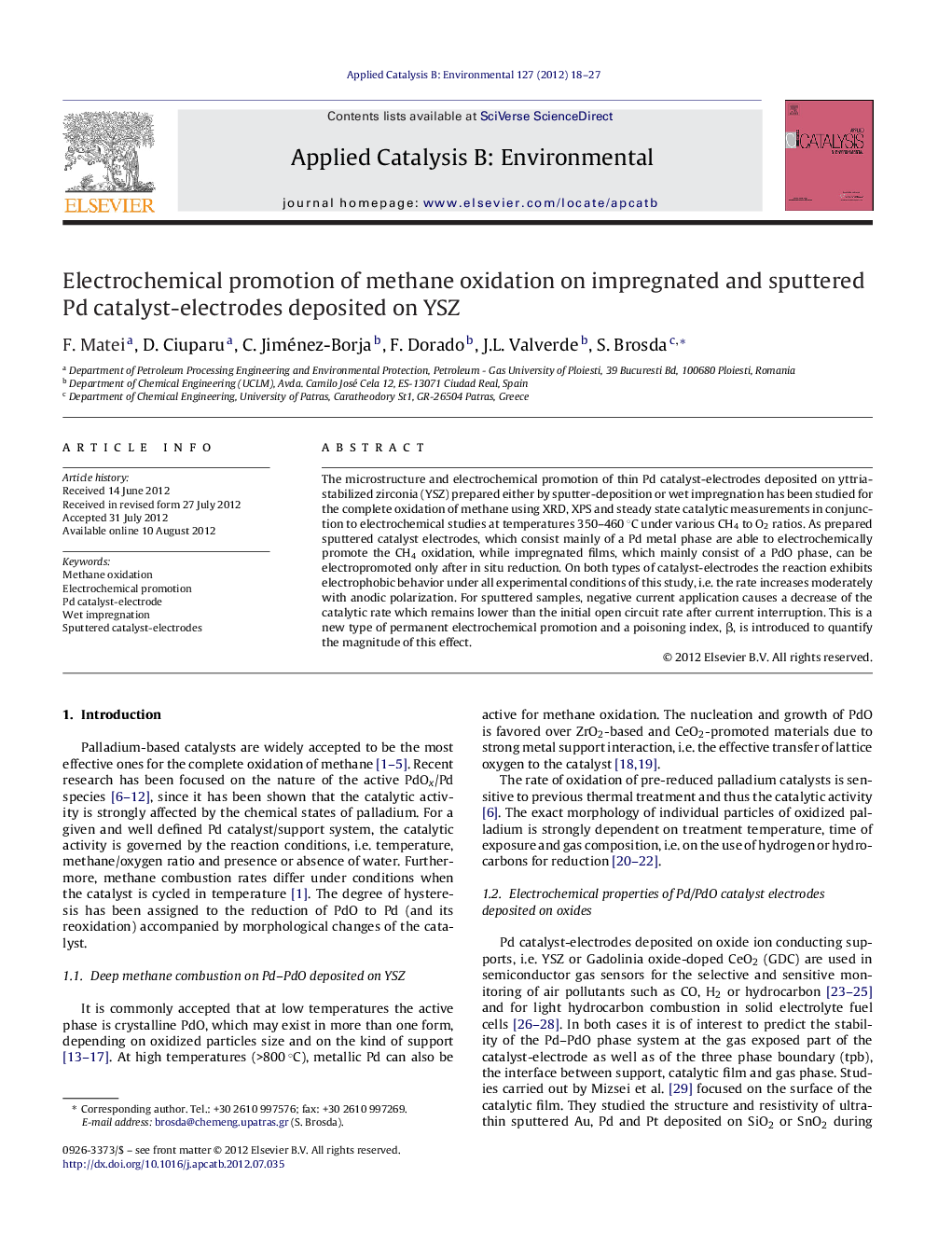| Article ID | Journal | Published Year | Pages | File Type |
|---|---|---|---|---|
| 46258 | Applied Catalysis B: Environmental | 2012 | 10 Pages |
The microstructure and electrochemical promotion of thin Pd catalyst-electrodes deposited on yttria-stabilized zirconia (YSZ) prepared either by sputter-deposition or wet impregnation has been studied for the complete oxidation of methane using XRD, XPS and steady state catalytic measurements in conjunction to electrochemical studies at temperatures 350–460 °C under various CH4 to O2 ratios. As prepared sputtered catalyst electrodes, which consist mainly of a Pd metal phase are able to electrochemically promote the CH4 oxidation, while impregnated films, which mainly consist of a PdO phase, can be electropromoted only after in situ reduction. On both types of catalyst-electrodes the reaction exhibits electrophobic behavior under all experimental conditions of this study, i.e. the rate increases moderately with anodic polarization. For sputtered samples, negative current application causes a decrease of the catalytic rate which remains lower than the initial open circuit rate after current interruption. This is a new type of permanent electrochemical promotion and a poisoning index, β, is introduced to quantify the magnitude of this effect.
Graphical abstractFigure optionsDownload full-size imageDownload as PowerPoint slideHighlights► As prepared sputtered Pd films on YSZ electrochemically promote CH4 combustion. ► Impregnated Pd films on YSZ electropromote CH4 combustion only after reduction. ► The former exhibit Faradaic efficiencies a factor of 10 higher than the latter. ► Coexistence of PdO and Pd phases needed for catalytic rate and electropromotion.
